Alex Constantine - May 13, 2007
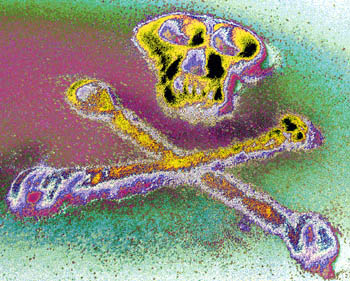 (Note: The FDA has restated its position that NutraSweet is not a carcinogen, having found "no evidence" that the rDNA-derivative stew is toxic, the conclusion of a recent Italian study. The European Food Safety Authority has reiterated the FDA's position (for a discussion of the issue, see: "EU Food Watchdog Whitewashing Aspartame: Cancers 'Not Due To Sweetener'":
(Note: The FDA has restated its position that NutraSweet is not a carcinogen, having found "no evidence" that the rDNA-derivative stew is toxic, the conclusion of a recent Italian study. The European Food Safety Authority has reiterated the FDA's position (for a discussion of the issue, see: "EU Food Watchdog Whitewashing Aspartame: Cancers 'Not Due To Sweetener'":
http://www.newmediaexplorer.org/sepp/2006/05/05/eu_food_watchdog_whitewashing_aspartame_cancers_not_due_to_sweetener.htm
– AC.)
-
Diet Coke Plus; still a minus!
Julia Havey
May 7, 2007
Will Diet Coke Be the Same … With Vitamins?
It's the one addiction people will admit to. But will Diet Coke—now 25 years old—be the same if it comes with vitamins?
 For most of the last century vice was defined by critic Alexander Woollcott's remark that everything he liked was "illegal, immoral or fattening." That, though, was before the invention of Diet Coke. "It's my one vice," says Amy Stensrud, a 46-year-old Seattle mother of two, who buys a 32-ounce container of Diet Coke at a 7-Eleven every morning, right after the gym. She has in effect defined vice upward as something "inconsistent with my values," which was never Woollcott's problem with bathtub gin.
For most of the last century vice was defined by critic Alexander Woollcott's remark that everything he liked was "illegal, immoral or fattening." That, though, was before the invention of Diet Coke. "It's my one vice," says Amy Stensrud, a 46-year-old Seattle mother of two, who buys a 32-ounce container of Diet Coke at a 7-Eleven every morning, right after the gym. She has in effect defined vice upward as something "inconsistent with my values," which was never Woollcott's problem with bathtub gin.
But now her only sin is in danger of being transformed into a virtue, as Coke rolls out a new version of Diet Coke with added vitamins and minerals. Blue-capped bottles of Diet Coke Plus will begin showing up in stores this week, empty of calories but containing 10 to 15 percent of the daily requirement of niacin, zinc, magnesium and vitamins B6 and B12. It isn't meant to replace Diet Coke, now the third best-selling soft drink in America, after Coke Classic and Pepsi; it's just a part of Coke's plan to conquer the world by making so many kinds of soda that stores won't have room for anything else. Competition is especially fierce now in the $70 billion soft-drink market. For the first time in recent history, the amount of soda sold in the United States—more than 16 billion gallons—fell in 2005, and again in 2006. Diet Coke Plus, says John Sicher, publisher of Beverage Digest, stands at the convergence of two powerful trends: the rise of diet drinks (30 percent of the soda market, up from 25 percent in 2000) and the move toward "functional" products such as sports drinks. According to Coke spokesman Scott Williamson, Diet Coke Plus will be advertised with slogans that merely imply it's good for you ("Your best friend just got friendlier!") without making any health claims. To do otherwise, he said, "would reinforce the false notion that soft drinks are unhealthy to begin with."(Gosh, they wouldn't want to do that, would they? what? tell us the truth that soft drinks are unhealthy?!)
Diet Coke Plus grew out of what Williamson calls Coke's "ongoing dialogue" with its customers. The same process gave rise to the dozen or so permutations of Coke on the market, including Diet Coke in 1982, followed by Diet Cherry Coke and Diet Coke Cherry (the same thing), and Coca-Cola Zero, a no-cal drink for men who are put off by the feminine connotations of "diet." Diet Coke Plus tastes something like Diet Coke, but sweeter, because it contains both aspartame and a sweetener called acesulfame potassium. Its choice of added nutrients seems somewhat arbitrary and doesn't include the one substance that might arguably be useful, calcium. "What's the point of adding vitamins to a soft drink?" wonders nutritionist Marion Nestle of NYU. "You can take a multivitamin pill. You can even take it with a Diet Coke."
You might need to, if you're a Diet Coke fanatic like Victoria Beckham, the former Posh Spice, who drinks almost nothing else and claims to hate the taste of water. Diet Coke is the one addiction that public figures willingly own up to. It's the only beverage in the back of producer Harvey Weinstein's limo, and makes up one half the diet of Florida State football coach Bobby Bowden. The other half consists of peanuts. A 12-ounce can of Diet Coke, which may contain from a third to half the amount of caffeine in eight ounces of coffee, is the breakfast drink of choice for many college students. "I like that fake sugar taste," says Stanford sophomore Margot Markman, who usually has the first of four daily 16-ounce cups from her sorority's fountain at 8:15. It is one of the few things you can buy at a gas station that's also an object of connoisseurship. Kristen Scaletta, a senior at Northwestern University in Evanston, Ill., who recently cut back from about a gallon of Diet Coke a day to three quarts, drinks it only from cans, preferably at room temperature—a taste she formed as a child when she had to sneak it past her parents to drink in her bedroom. Other people insist on the flavor of Diet Coke from liter bottles, or McDonald's.
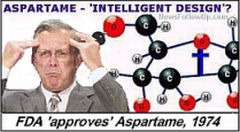 Taste aside, what makes Diet Coke so addictive? Caffeine produces physical dependence, as anyone who has suffered through the headaches of coffee withdrawal can testify. But addiction specialists pooh-pooh the idea that people can be "addicted" to soda, in the sense that it interferes with normal life. The other obvious point about it is that it has no calories. Not everyone who drinks it is trying to lose weight, but presumably none of them cares to subject her body to the 1,120 calories in eight cans a day of regular Coke. The role of diet sodas in weight loss is a contentious area of research. "Studies suggest that diet drinks can bump calories out of the diet short term," says Dr. David Katz, a public-health specialist at Yale, "but that people compensate over time by eating more sugar." An unpublished seven-year study by Sharon Fowler of the University of Texas found that the more diet sodas people drank, the more likely they were to be overweight—although that doesn't prove cause and effect. Fitness guru Richard Simmons estimates that 85 percent of the people who come to him to lose weight drink diet soda habitually.
Taste aside, what makes Diet Coke so addictive? Caffeine produces physical dependence, as anyone who has suffered through the headaches of coffee withdrawal can testify. But addiction specialists pooh-pooh the idea that people can be "addicted" to soda, in the sense that it interferes with normal life. The other obvious point about it is that it has no calories. Not everyone who drinks it is trying to lose weight, but presumably none of them cares to subject her body to the 1,120 calories in eight cans a day of regular Coke. The role of diet sodas in weight loss is a contentious area of research. "Studies suggest that diet drinks can bump calories out of the diet short term," says Dr. David Katz, a public-health specialist at Yale, "but that people compensate over time by eating more sugar." An unpublished seven-year study by Sharon Fowler of the University of Texas found that the more diet sodas people drank, the more likely they were to be overweight—although that doesn't prove cause and effect. Fitness guru Richard Simmons estimates that 85 percent of the people who come to him to lose weight drink diet soda habitually.
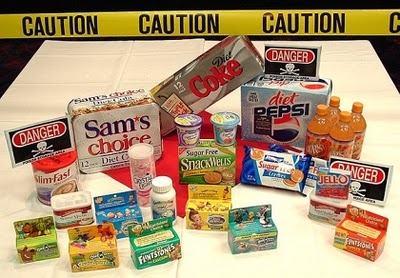 People do worry about the health effects of diet soft drinks. There is some research to suggest that all colas, not diet ones in particular, may contribute to bone loss i
People do worry about the health effects of diet soft drinks. There is some research to suggest that all colas, not diet ones in particular, may contribute to bone loss i
n women, but all the evidence isn't in yet. A new study found that the acid in sodas erodes tooth enamel (although full-sugar versions, and citrus flavors, are worse). As for artificial sweeteners, a study of the literature by Valerie Duffy of the University of Connecticut suggests they're safe. "They've all been through extensive testing," she says, "for acute toxicity, chronic toxicity, carcinogenic potential, effects on fertility, lactation, fetal development" and about six other things. To reach the FDA's "acceptable daily intake" of aspartame—which itself has a wide margin of safety—"you'd have to drink 18 cans of Diet Coke every day of your life," says Hud Englehart, a spokesman for aspartame's manufacturer, NutraSweet. (The actual figure, Duffy points out, varies with the person's weight.) "It's pretty hard to drink that much."
Mr. Englehart, meet Rich Underkofler, a 47-year-old from Euclid, Ohio. "I drink this stuff like crazy," Underkofler says. "I don't even go to restaurants that don't serve Diet Coke." Checking his refrigerator one night last week, he found two 12-packs. That would last him, he figured, a little more than a day.
Ok, it's a free country and Coca-Cola can come up with Diet Coke Plus, Diet Coke Junk, Diet Coke Aspartame Punch or any other flavor or mix they want but here's the real thing: It's unhealthy!
You may think that because it says "diet" on the can or in the ads that it will make you thinner, but if you think that you are wrong! One of my readers recently gave up her SIX diet soft drinks a day, replaced them with water, started eating a healthy breakfast instead of skipping it and having a diet soft drink--and she is down 24 pounds in only 4 weeks! NO other changes!
And for the record Mr. Williamson simply adding vitamins to it doesn't make it any less UNHEALTHY!
 And, one other thought, your body is not lacking the lab created synthetic vitamins that Coca-Cola is lacing their aspartame punch (i.e. Diet Coke) with, your body is lacking apples, oranges, kiwi, peppers, tomato, spinach, kale--you know; real nutrition!
And, one other thought, your body is not lacking the lab created synthetic vitamins that Coca-Cola is lacing their aspartame punch (i.e. Diet Coke) with, your body is lacking apples, oranges, kiwi, peppers, tomato, spinach, kale--you know; real nutrition!
--
'Yes, Aspartame Is a Carcinogen'
Francesca Colombo
17 April 2006
Source: http://www.phmovement.org/en/node/157
 BOLOGNA, Apr 15 (Tierramérica) - The Italian scientist Morando Soffritti has revived the debate about the safety of aspartame, an artificial sweetener used in many popular products, including diet softdrinks made by Coca-Cola and Pepsi Co. After studying 1,800 rats over eight years, his research team concluded that aspartame could have carcinogenic effects.
BOLOGNA, Apr 15 (Tierramérica) - The Italian scientist Morando Soffritti has revived the debate about the safety of aspartame, an artificial sweetener used in many popular products, including diet softdrinks made by Coca-Cola and Pepsi Co. After studying 1,800 rats over eight years, his research team concluded that aspartame could have carcinogenic effects.
The results, first released in July 2005 and published in March in the U.S. Department of Health's journal, "Environmental Health Perspectives", contradict other studies financed by the company that created the sweetner, G.D. Searle & Company, which assures aspartame poses no risks to human health.
For the past 25 years, the product has been authorised by the U.S. Food and Drug Administration (FDA) for human consumption.
The sale of aspartame, with only four calories per gram and 200 times sweeter than sugar, is sold under the trademarks NutraSweet and Equal, bringing in 570 million dollars a year. It is estimated that some 350 million people around the world, many in hopes of losing weight, consume aspartame daily through 6,000 kinds of foods and beverages. In Europe alone, 2,000 tonnes of the sweetener are sold annually.

Soffritti's investigation was conducted at the Cesare Maltoni Cancer Research Centre, of the European Ramazzini Foundation in Bologna, which he heads. This institution, founded in 1971, won international credibility when it uncovered the cancer-causing properties of the gasoline additive MTBE (methyl tertiary butyl ether), which led to its ban in 21 U.S. states.
Tierramérica spoke with Soffritti in Italy. Following are excerpts from that dialogue:
Q: What are the results of your investigations conducted between 1997 and 2005 about the effect of aspartame?
 A: The results indicate that aspartame is a multi-potential carcinogen, even consumed daily at 20 milligrams per kilogram of body weight. That is a lower quantity than the maximum recommended by the FDA (50 mg/kg of body weight) and the European Union (40 mg/kg).
A: The results indicate that aspartame is a multi-potential carcinogen, even consumed daily at 20 milligrams per kilogram of body weight. That is a lower quantity than the maximum recommended by the FDA (50 mg/kg of body weight) and the European Union (40 mg/kg).
Q: What kind of cancer does it produce?
A: Our study showed for the first time that aspartame increases the incidence of malignant tumours in rats. In the females it increases leukaemia and lymphomas, as well as cancerous cells in the pelvis and urethra. In the males, it especially increases the incidence of malignant tumours in peripheral nerves.
Q: How many rats were studied and what method was used?
A: We studied 1,800 rats (Sprague-Dawley) that were raised for this purpose. We gave them, by groups, doses similar to those ingested daily by people, of 5,000, 2,500, 500, 100, 20, 4 or 0 mg/kg of body weight.
Aspartame was added to the standard diet (seven doses in the food).
The experiment began when the animals were eight months old and lasted until their natural death, at 159 weeks. When the rats died we conducted histopathological studies of their organs and tissues. We analysed more than 30,000 samples.
Q: Can it be assumed that what happened in the rats could also happen in human beings?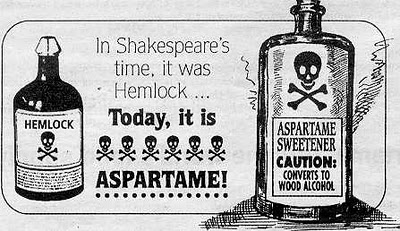 A: According to an investigation of cancer by the World Heath Organisation, the experimental study of carcinogenic agents in rats is very important for humans. One-third of the cancer-causing agents in man have been discovered with experiments conducted on animals.
A: According to an investigation of cancer by the World Heath Organisation, the experimental study of carcinogenic agents in rats is very important for humans. One-third of the cancer-causing agents in man have been discovered with experiments conducted on animals.
Q: Aspartame is sold mainly as a means for people to control their weight. In your experiment, did the animals lose weight?
A: No. We saw that those consuming aspartame ate less, but their body weight remained the same. We don't have an explanation for that, not in our field.
Q: Aspartame is also consumed by children and by pregnant women. Wh
at effects could it have on them?
A: The study of the doses correlated between the milligrams that were consumed and body weight. This tells us that the carcinogenic effect in children could be greater (because of their lower weight). The carcinogenic agents have a stronger effect on the embryo, which is why pregnant women are at greater risk.
Q: Are people who consume aspartame condemned to developing cancer?
A: Cancer is related to many factors and to genetics. We can't say that a consumer of aspartame will develop cancer. There are people who smoke cigarettes their entire lives and never develop lung cancer.
Q: There are several studies that assure aspartame is harmless to human health. What is the difference between those and the study that you led?
A: First, those studies about the cancerous effect in rats and mice were done in the 1970s, before the commercialisation of aspartame began, and were paid for by the companies that produced [the sweetener].
The results of those studies did not show that aspartame was carcinogenic. But some members of the scientific community doubt the quality of of those experiments because some animals that consumed aspartame presented with brain tumours, while the control animals didn't have any problems.
Second, those studies utilised fewer animals (280 and 688 rats) and were not conducted according to the standards of "Good Laboratory Practices", so one cannot conclude with certainty that aspartame is not a carcinogen. Our research centre is independent. It doesn't receive any financing from the industry producing the product.
Q: Are new scientific studies about the potential cancer-causing effects of aspartame necessary?
A: Yes, more studies are needed in order to obtain greater precision in quantifying the risk. The current results already demand -- by the competent bodies -- an urgent review of the norms regulating the use and consumption of aspartame in order to protect public health, especially children's health.
Q: Your study is being reviewed by the European Commission's Food Safety Authority, which will issue a statement in May. Do you think it will validate your study, and do you think government agencies in Europe and elsewhere should ban aspartame?
A: I hope they revise their current regulations.
(* Francesca Colombo is a Tierramérica contributor. Originally published Apr. 8 by Latin American newspapers that are part of the Tierramérica network. Tierramérica is a specialised news service produced by IPS with the backing of the United Nations Development Programme and the United Nations Environment Programme.)





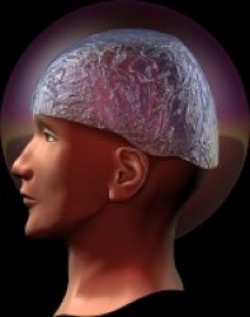


formaldehyde as a potent unexamined cofactor in cancer research —
sources include methanol, dark wines and liquors, aspartame, wood and
tobacco smoke: IARC Monographs on the Evaluation of Carcinogenic Risks
to Humans implicate formaldehyde in #88 and alcohol drinks in #96:
some related abstracts: Murray 2007.05.14
http://groups.yahoo.com/group/aspartameNM/message/1417
aspartame (methanol, formaldehyde) toxicity research summary: Rich
Murray 2007.05.14
http://groups.yahoo.com/group/aspartameNM/message/1404
One liter aspartame diet soda, about 3 12-oz cans,
gives 61.5 mg methanol,
so if 30% is turned into formaldehyde, the formaldehyde
dose of 18.5 mg is 37 times the recent EPA limit of
0.5 mg per liter daily drinking water for a 10-kg child:
http://www.epa.gov/teach/chem_summ/Formaldehyde_summary.pdf
2007.01.05 [ does not discuss formaldehyde from methanol
or aspartame ]
http://www.epa.gov/teach/teachsurvey.html comments
teach@environmentalhealthconsulting.com
“Of course, everyone chooses, as a natural priority,
to actively find, quickly share, and positively act upon
the facts about healthy and safe food, drink, and
environment.”
Rich Murray, MA Room For All rmforall@comcast.net
505-501-2298 1943 Otowi Road, Santa Fe, New Mexico 87505
http://groups.yahoo.com/group/aspartameNM/messages
group with 75 members, 1,425 posts in a public, searchable archive
http://RMForAll.blogspot.com
http://groups.yahoo.com/group/aspartameNM/message/1340
aspartame groups and books: updated research review of
2004.07.16: Murray 2006.05.11
http://groups.yahoo.com/group/aspartameNM/message/1395
Aspartame Controversy, in Wikipedia democratic
encyclopedia, 72 references (including AspartameNM # 864
and 1173 by Murray), brief fair summary of much more
research: Murray 2007.01.01
Dark wines and liquors, as well as aspartame, provide
similar levels of methanol, above 120 mg daily, for
long-term heavy users, 2 L daily, about 6 cans.
Within hours, methanol is inevitably largely turned into
formaldehyde, and thence largely into formic acid — the
major causes of the dreaded symptoms of “next morning”
hangover.
Fully 11% of aspartame is methanol — 1,120 mg aspartame
in 2 L diet soda, almost six 12-oz cans, gives 123 mg
methanol (wood alcohol). If 30% of the methanol is turned
into formaldehyde, the amount of formaldehyde, 37 mg,
is 18.5 times the USA EPA limit for daily formaldehyde in
drinking water, 2.0 mg in 2 L average daily drinking water.
http://groups.yahoo.com/group/aspartameNM/message/1286
methanol products (formaldehyde and formic acid) are main
cause of alcohol hangover symptoms [same as from similar
amounts of methanol, the 11% part of aspartame]:
YS Woo et al, 2005 Dec: Murray 2006.01.20
http://groups.yahoo.com/group/aspartameNM/message/1143
methanol (formaldehyde, formic acid) disposition:
Bouchard M et al, full plain text, 2001: substantial
sources are degradation of fruit pectins, liquors,
aspartame, smoke: Murray 2005.04.02
“According to model predictions, congruent with the data in the
literature [Dorman et al., 1994; Horton et al., 1992], a certain
fraction of formaldehyde is readily oxidized to formate,
a major fraction of which is rapidly converted to CO2 and exhaled,
whereas a small fraction is excreted as formic acid in urine.
However, fits to the available data in rats and monkeys of Horton et
al. [1992] and Dorman et al. [1994] show that, once formed, a
substantial fraction of formaldehyde is converted to unobserved forms.
This pathway contributes to a long-term unobserved compartment.
The latter, most plausibly, represents either the formaldehyde that
[directly or after oxidation to formate] binds to various endogenous
molecules [Heck et al., 1983; Røe, 1982] or is incorporated in the
tetrahydrofolic-acid-dependent one-carbon pathway to become the
building block of a number of synthetic pathways
[Røe, 1982; Tephly and McMartin, 1984].
That substantial amounts of methanol metabolites or by-products are
retained for a long time is verified by Horton et al. [1992] who
estimated that 18 h following an iv injection of 100 mg/kg of
14C-methanol in male Fischer-344 rats,
only 57% of the dose was eliminated from the body.
>From the data of Dorman et al. [1994] and Medinsky et al. [1997],
it can further be calculated that 48 h following the start
of a 2-h inhalation exposure to 900 ppm of 14C-methanol vapors
in female cynomolgus monkeys,
only 23% of the absorbed 14C-methanol was eliminated from the body.
These findings are corroborated by the data of Heck et al. [1983]
showing that 40% of a 14C-formaldehyde inhalation dose remained
in the body 70 h postexposure.
In the present study, the model proposed rests on acute exposure
data, where the time profiles of methanol and its metabolites were
determined only over short time periods
[a maximum of 6 h of exposure and a maximum of 48 h postexposure].
This does not allow observation of the slow release from the long-term
components.
It is to be noted that most of the published studies on the detailed
disposition kinetics of methanol regard controlled short-term
[iv injection or continuous inhalation exposure over a few hours]
methanol exposures in rats, primates, and humans
[Batterman et al., 1998; Damian and Raabe, 1996;
Dorman et al., 1994; Ferry et al., 1980; Fisher et al., 2000;
Franzblau et al., 1995; Horton et al., 1992; Jacobsen et al., 1988;
Osterloh et al., 1996; Pollack et al., 1993; Sedivec et al., 1981;
Ward et al., 1995; Ward and Pollack, 1996].
Experimental studies on the detailed time profiles following
controlled repeated exposures to methanol are lacking.”
http://groups.yahoo.com/group/aspartameNM/message/1406
brain cell tangles and neuron death similar to Alzheimers
via low dose formaldehyde from methanol,
Chunlai Nie, Rongqiao He et al, China, 2007.01.23 BMC
Neuroscience 28 pages, 63 references: Murray 2007.01.24
http://groups.yahoo.com/group/aspartameNM/message/1385
Coca-Cola carcinogenicity in rats, Ramazzini Foundation,
F Belpoggi, M Soffritti, Annals NY Academy Sciences
2006 Sept, parts of 17 pages: Murray 2006.12.02
http://groups.yahoo.com/group/aspartameNM/message/1382
Fiorella Belpoggi & Morando Soffritti of Ramazzini
Foundation prove lifetime carcinogenicity of Coca-Cola,
aspartame, and arsenic, Annals of the NY Academy of
Sciences: Murray 2006.11.28
http://groups.yahoo.com/group/aspartameNM/message/1369
Bristol, Connecticut, schools join state program to limit
artificial sweeteners, sugar, fats for 8800 students,
Johnny J Burnham, The Bristol Press: Murray 2006.09.22
http://groups.yahoo.com/group/aspartameNM/message/1341
Connecticut bans artificial sweeteners in schools,
Nancy Barnes, New Milford Times: Murray 2006.05.25
http://groups.yahoo.com/group/aspartameNM/message/1376
soft drinks and adolescent hyperactivity, mental distress,
conduct problems, Lars Lien, Nanna Lien, Sonja Heyerdahl,
Mayne Thoresen, Espen Bjertness 2006 Oct., A J Pub Health:
Murray 2006.10.21
http://groups.yahoo.com/group/aspartameNM/message/1375
healthy diet, vitamins, and fish oil help reduce
depression and violence, studies by Joseph Hibbeln,
Bernard Gesch, and Stephen Schoenthaler, articles by
Felicity Lawrence in UK Guardian Unlimited and Pat
Thomas in The Ecologist: Murray 2006.10.21
http://groups.yahoo.com/group/aspartameNM/message/1353
carcinogenic effect of inhaled formaldehyde, Federal
Institute of Risk Assessment, Germany — same
safe level
as for Canada: Murray 2006.06.02
http://groups.yahoo.com/group/aspartameNM/message/1352
Home sickness — indoor air often worse, as our homes
seal in pollutants [one is formaldehyde, also from the 11%
methanol part of aspartame],
Megan Gillis, WinnipegSun.com: Murray 2006.06.01
http://groups.yahoo.com/group/aspartameNM/message/1414
effect of aspartame on oncogene and suppressor gene expressions in
mice, Katalin Gambos, Istvan Ember, et al, University of Pecs,
Hungary, In Vivo 2007 Jan; scores of their relevant past studies since
1977: Murray 2007.04.14
http://groups.yahoo.com/group/aspartameNM/message/1366
toxicity in rat brains from aspartame, Vences-Mejia A,
Espinosa-Aguirre JJ et al 2006 Aug: Murray 2006.09.06
http://groups.yahoo.com/group/aspartameNM/message/1373
aspartame rat brain toxicity re cytochrome P450 enzymes,
especially CYP2E1, Vences-Mejia A, Espinosa-Aguirre JJ
et al, 2006 Aug, Hum Exp Toxicol: relevant abstracts re
formaldehyde from methanol in alcohol drinks:
Murray 2006.09.29
http://groups.yahoo.com/group/aspartameNM/message/1271
combining aspartame and quinoline yellow, or MSG and
brilliant blue, harms nerve cells, eminent C. Vyvyan
Howard et al, 2005 education.guardian.co.uk,
Felicity Lawrence: Murray 2005.12.21
http://groups.yahoo.com/group/aspartameNM/message/1277
50% UK baby food is now organic — aspartame or MSG
with food dyes harm nerve cells, CV Howard 3 year study
funded by Lizzy Vann, CEO, Organix Brands,
Children’s Food Advisory Service: Murray 2006.01.13
http://groups.yahoo.com/group/aspartameNM/message/1279
all three aspartame metabolites harm human erythrocyte
[red blood cell] membrane enzyme activity, KH Schulpis
et al, two studies in 2005, Athens, Greece, 2005.12.14:
2004 research review, RL Blaylock: Murray 2006.01.14
http://groups.yahoo.com/group/aspartameNM/message/1349
NIH NLM ToxNet HSDB Hazardous Substances Data Bank
inadequate re aspartame (methanol, formaldehyde,
formic acid): Murray 2006.08.19
http://toxnet.nlm.nih.gov/cgi-bin/sis/search/f?./temp/~HwoSfJ:1
HSDB Hazardous Substances Data Bank: Aspartame
ASPARTAME CASRN: 22839-47-0
METHANOL CASRN: 67-56-1
FORMALDEHYDE CASRN: 50-00-0
FORMIC ACID CASRN: 64-18-6
http://groups.yahoo.com/group/aspartameNM/message/1052
DMDC: Dimethyl dicarbonate 200mg/L in drinks adds methanol
98 mg/L ( becomes formaldehyde in body ): EU Scientific
Committee on Foods 2001.07.12: Murray 2004.01.22
http://www.HolisticMed.com/aspartame mgold@holisticmed.com
Aspartame Toxicity Information Center Mark D. Gold
12 East Side Drive #2-18 Concord, NH 03301 603-225-2100
http://www.holisticmed.com/aspartame/abuse/methanol.html
“Scientific Abuse in Aspartame Research”
http://groups.yahoo.com/group/aspartameNM/message/957
safety of aspartame Part 1/2 12.4.2: EC HCPD-G SCF:
Murray 2003.01.12 EU Scientific Committee on Food,
a whitewash
http://groups.yahoo.com/group/aspartameNM/message/1045
http://www.holisticmed.com/aspartame/scf2002-response.htm
Mark Gold exhaustively critiques European Commission
Scientific Committee on Food re aspartame ( 2002.12.04 ):
59 pages, 230 references
///////////////////////////////////////////////////////////
http://groups.yahoo.com/group/aspartameNM/message/782
RTM: Smith, Terpening, Schmidt, Gums:
full text: aspartame, MSG, fibromyalgia 2002.01.17
Jerry D Smith, Chris M Terpening,
Siegfried OF Schmidt, and John G Gums
Relief of Fibromyalgia Symptoms Following
Discontinuation of Dietary Excitotoxins.
The Annals of Pharmacotherapy 2001; 35(6): 702-706.
Malcolm Randall Veterans Affairs Medical Center,
Gainesville, FL, USA.
BACKGROUND: Fibromyalgia is a common rheumatologic
disorder that is often difficult to treat effectively.
CASE SUMMARY: Four patients diagnosed with fibromyalgia
syndrome for two to 17 years are described.
All had undergone multiple treatment modalities with
limited success.
All had complete, or nearly complete,
resolution of their symptoms within months after
eliminating monosodium glutamate (MSG)
or MSG plus aspartame from their diet.
All patients were women with multiple comorbidities
prior to elimination of MSG.
All have had recurrence of symptoms whenever MSG
is ingested.
Siegfried O. Schmidt, MD Asst. Clinical Prof.
siggy@shands.ufl.edu
Community Health and Family Medicine, U. Florida,
Gainesville, FL Shands Hospital West Oak Clinic
Gainesville, FL 32608-3629 352-376-5071
///////////////////////////////////////////////////////////
http://groups.yahoo.com/group/aspartameNM/message/915
formaldehyde toxicity: Thrasher & Kilburn: Shaham: EPA:
Gold: Wilson: CIIN: Murray 2002.12.12
Thrasher (2001): “The major difference is that the
Japanese demonstrated the incorporation of FA and its
metabolites into the placenta and fetus.
The quantity of radioactivity remaining in maternal and
fetal tissues at 48 hours was 26.9% of the administered
dose.” [ Ref. 14-16 ]
Arch Environ Health 2001 Jul-Aug; 56(4): 300-11.
Embryo toxicity and teratogenicity of formaldehyde.
[100 references]
Thrasher JD, Kilburn KH. toxicology@drthrasher.org
Sam-1 Trust, Alto, New Mexico, USA. full text
http://www.drthrasher.org/formaldehyde_embryo_toxicity.html
http://www.drthrasher.org/formaldehyde_1990.html full text
Jack Dwayne Thrasher, Alan Broughton, Roberta Madison.
Immune activation and autoantibodies in humans with
long-term inhalation exposure to formaldehyde.
Archives of Environmental Health. 1990; 45: 217-223.
PMID: 2400243
///////////////////////////////////////////////////////////
Perhaps Chomsky’s angle is that people, Americans in particular, would not know or accept the truth regardless. The Gulf of Tonkin but one example; the bombing of Hiroshima and Nagasaki another; the invasion of Afghanistan to destroy a tactic yet another.
Most people have proven incapable of seeing the obvious even when it is pointed out and explained to them.
Hence, we have religions, monarchies, global corporatism running government, ‘banksters’ and patriots everywhere — all existing because of a serious want of reason by the masses.
The Leviathan will do what it wants until it is brought down sometime, somehow — but if history offers any light the Leviathan will undo itself — seemingly regardless of the heinous facts.
That said, of course it is important that the truth be known. The pursuit of the truth is our only chance at a better world. How did Noam Chomsky lose sight of this??